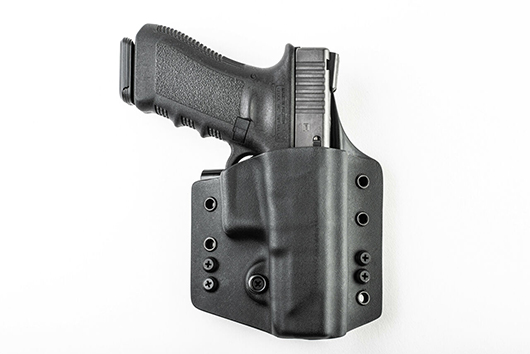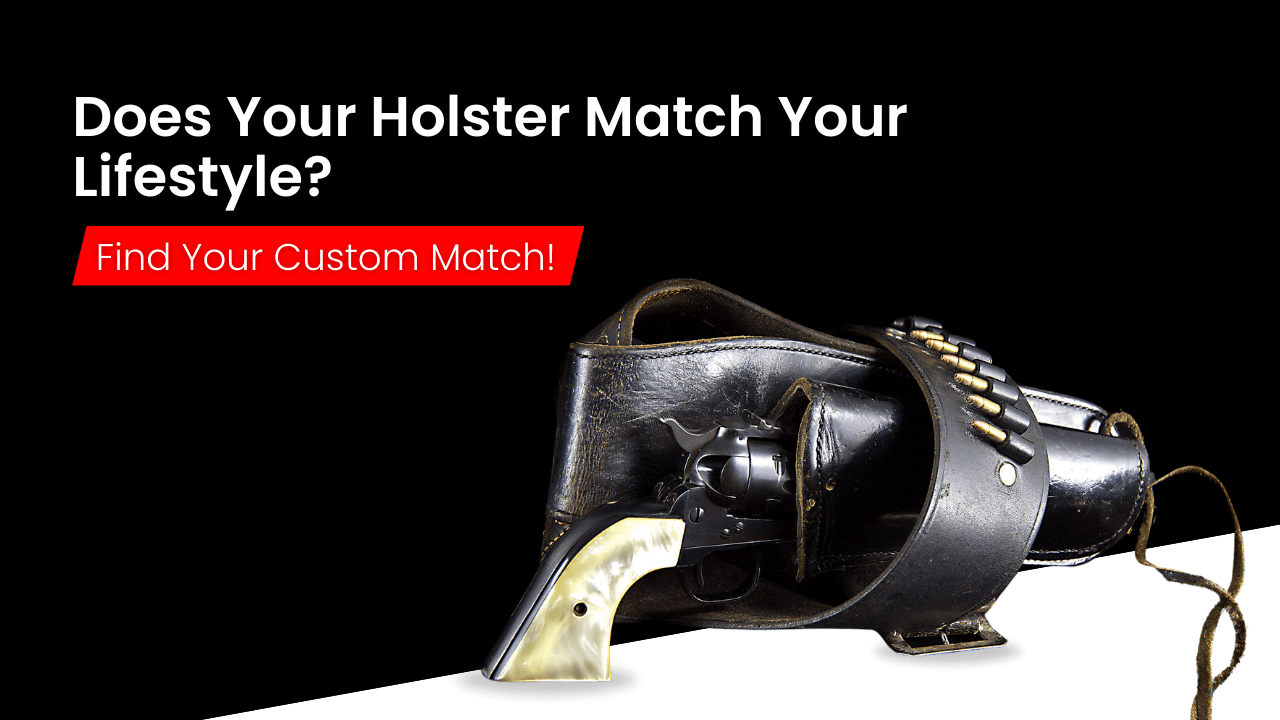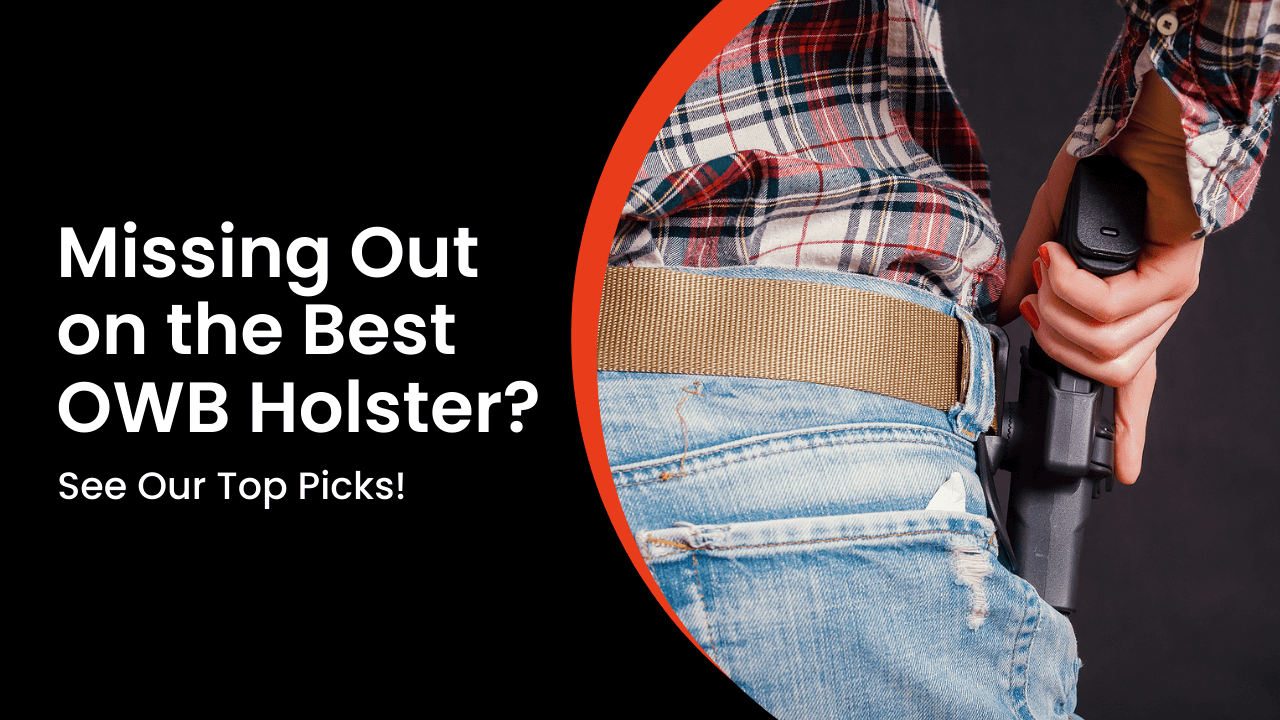What Style of OWB Holster Should You Buy?
Nov 11th 2021
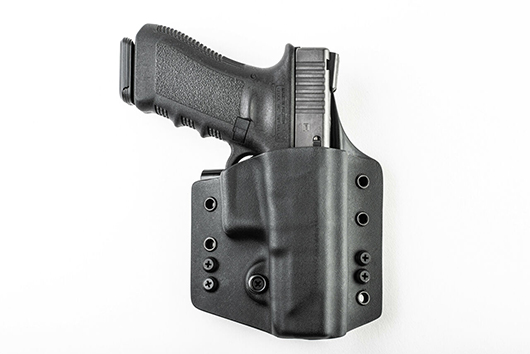
Generally speaking, Outside the Waistband (OWB) holsters are an excellent way to carry a full-sized handgun. Although they may not be as easily concealable as Inside the Waistband (IWB) holsters, OWB holsters are versatile and more comfortable.
If you’re interested in OWB carry, choosing a holster can be challenging. As the oldest gun holster design, there are many types and variants available on the market. Learn about some of the most common OWB holster variations and find out which type is the best for you.
Different Types of OWB Holsters
The OWB holster is the oldest type of handgun holster in history. The first-ever holster was the pommel holster, a combination leather holster and flap bag invented in the 1830s and designed for horseback carry.
The first belt holsters descend from the pommel design, adapting the original design for personal carry. The two most successful designs were the Slim Jim holster (1850s) and the Mexican Loop style (1870s). Although modern holsters are no longer integrated with the belt, allowing you to choose a gun belt and a holster separately, all outside the waistband holsters (and associated carry methods) descend from these historical examples.
The three most common OWB holster types available today are standard OWB belt holsters, paddle holsters, and retention holsters.
Standard OWB Belt Holster
Standard OWB belt holsters use a classic, time-tested design. They feature two pieces of material sewn or bolted together, covering the handgun’s barrel, part of the slide, and the trigger guard, and mounted to a gun belt via belt loops. This design is sometimes referred to as a pancake holster due to its shape.
Like their IWB equivalents, standard OWB belt holsters feature no active retention systems. They keep your handgun secured through passive retention (friction, molding) only.
Modern OWB belt holster designs typically employ Kydex instead of older, more traditional materials, such as leather or nylon. While they are naturally suitable for open carry, quality OWB Kydex holsters feature contouring and low-profile designs intended to facilitate their use as concealed carry holsters. Such designs print less and are more comfortable than OWB holsters of yesteryear.
Pros of standard OWB belt holsters
- Highly versatile, suitable for handguns of all sizes
- Easy to adapt for any carry position (strong-side hip, FBI, cross-draw, etc.)
- Allows for quick draw speeds and the most consistent draw and re-holstering strokes
Cons of standard OWB belt holsters
- Taking the holster off or changing the carry position requires removing the gun belt
- If you’re looking to carry concealed, not all models are suitable
- May cause your weapon to dig into your side when sitting, crouching, or bending your body down
Paddle Holster
At first glance, a paddle holster looks similar to a traditional OWB holster. However, there is one critical difference: Paddle holsters do not have belt loops. Instead, they possess a large, spring-loaded flat piece of plastic called a paddle.
The paddle’s purpose is to slide inside your waistband and bite into your pants, securing the holster to your body. Once fully inserted, a paddle holster will not move from its position unless deliberately pulled.
The primary advantage of a paddle holster is convenience. Paddle holsters are easy to insert and remove in virtually any waistband position. This ease of adjustment can be a significant advantage if you frequently transition from standing to sitting positions.
For those reasons, paddle holsters are popular with plain clothes law enforcement officers. They can relocate the holster quickly when entering and exiting patrol vehicles.
Pros of paddle holsters
- Highly convenient and easy to adjust, allowing you to switch carry positions within seconds
- If needed, you can use a paddle holster without a belt
- Taking off the holster takes seconds, allowing you to keep your handgun holstered even when in storage
Cons of paddle holsters
- Less retention and safety than a standard belt holster
- It sticks out further than belt holsters, making it even more challenging to conceal
- If your draw stroke is forceful, you might pull the entire holster alongside your handgun
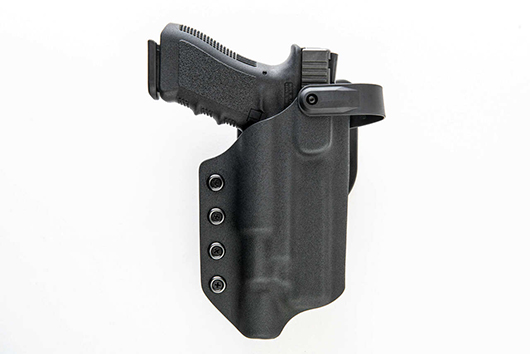
Retention Holster
Retention holsters resemble standard OWB holsters but feature additional safety and retention systems. Security guards, uniformed law enforcement officers, and specific military units use retention holsters to carry a weapon openly and safely. The safety mechanisms of a retention holster are designed to minimize, if not eliminate, the risk of an attacker taking your gun from your holster and either stealing it or using it against you.
Retention holsters are differentiated by levels, starting at Level 2 and typically ending at Level 4. Level 1 retention only uses passive retention systems, meaning that standard OWB holsters are effectively Level 1.
Level 2 holsters use one active retention system on top of passive retention, and each subsequent level adds another retention mechanism.
Active retention systems include the following:
- Thumb break loop
- Retention strap
- Trigger guard lock
- Altered draw stroke mechanism
In addition to the active retention mechanisms that keep your gun holstered, retention holsters may also feature holster retention systems, securing your holster to your body. These are typically clips or hooks meant to grab onto your gun belt or the inside of your waistband.
Pros of retention holsters
- It offers the best possible retention and security, making it the safest OWB holster style
- Multiple retention levels are available, giving you control over the number of safety mechanisms you need
- Choose from a wide variety of active retention systems, letting you adjust to your preferences
Cons of retention holsters
- Inadequate for concealed carrying; mainly designed for open carry and duty
- The higher the retention level, the slower the draw speed
- The retention mechanisms alter the draw stroke, requiring specific training and practice
Carry Your Weapon Safely and Confidently With Incognito Concealment
Each type of OWB holster has its own pros and cons. Depending on your needs and objectives, some styles may be more suitable than others. If you’re new to OWB carry, select a standard OWB holster. Otherwise, make your choice depending on your priority: comfort, convenience, or extra security.
No matter which holster you choose, Incognito Concealment has the everyday carry holsters you need. We manufacture 100% hand-crafted Kydex holsters, suitable for all popular IWB and OWB carrying styles and compatible with a wide array of handgun models.
For any questions or advice regarding holsters, don’t hesitate to call us at (586) 333-4240.

